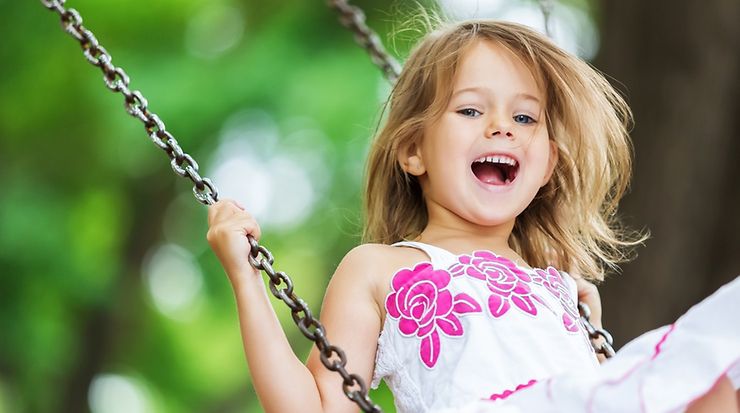Press
Standards for children
Standards help ensure children's safety, a high priority for everyone.

There are many standards covering articles intended for small children such as bottles, toys and clothing. For example, according to DIN EN 14682 children's clothing is not to have any cords or drawstrings in hoods or near the neck, as these could cause injury by becoming caught on play equipment such as slides.
A child's favourite cuddly toy plays an important part in the first years and has to endure much during the course of its lifetime: it is squeezed and pulled, and often has to take part in daring stunts to satisfy the child's curiosity. All this is without consequence for cuddly toys standardized to DIN EN 71-1, however, since these have already passed important tests: their fur is fire-resistant, and their button eyes have undergone precisely defined tensile tests. And even if an eye were to fall off, according to the standard it is certainly to be too big to be swallowed.
The design and testing of school bags and backpacks are also dealt with in standards:
DIN 58124 specifies requirements relating to ergonomic and safety aspects: It is important that the load on a child's back is correctly distributed, and children must be easily seen on their way to school, especially on dark mornings; the right colours on a school bag make the children easily visible when crossing the road.
Standards also make sure children are safe riding to school by bike: DIN EN 14765 deals with safety requirements for children's bicycles.
Whether in history, geography or math class, teachers need something to write on. To prevent teachers and students from getting their fingers caught between the different leaves of the board DIN EN 14434 on "Writing boards for educational institutions" specifies that these leaves must be separated by a space of either less than 8 mm or more than 25 mm. And standards such as DIN EN 12503 "Sports mats" ensure safety in sports halls.
Swinging is not only fun for children, it is also healthy and helps develop motor skills. To prevent a hard landing, swings must meet certain criteria regarding stability and safe design, such as those laid down in DIN EN 71-8 for "activity toys for domestic use". For example, swings in accordance with this standard will not fall over and do not have any sharp edges that can cause injury.
A football goal should never collapse, whether the game is played on a neighbourhood playing field or in an association championship. DIN EN 748 lays down a method for testing the stability of goals so that the players can concentrate on having fun - and winning!
Skiing is a favourite family pastime during the winter break, and standards help keep this activity safe for all. For example, ski-bindings that comply with DIN ISO 9462 will make sure the boot separates from the ski in a fall, preventing a broken leg.
Another increasingly popular sport is the fast and furious roller blading. Here, too, standards help keep it safe: DIN EN 13843 ensures the brakes and binding elements of inline skates function properly, and DIN EN 14120 lays down requirements for the protective clothing necessary to prevent serious scrapes and broken bones.
During summer vacation kids swarm to the nearest swimming pool or lake, and if there is a water slide, all the better! Slides in accordance with DIN EN 1069-1 will not tip over and are safe no matter how fast the children slide down. Signs and instructions for use that comply with DIN EN 10691-2 explain clearly how the slide can be safely used.
Air mattresses, water trampolines and banana boats also make swimming more fun. The DIN EN 15649 series of standards on "floating leisure articles for use on and in the water" lays down a test to ensure there is enough air for the article to remain buoyant.
While swimming and playing in the water it is essential that children's' sensitive skin be protected from the sun. DIN 67502 describes a standard method of measuring "transmittance" to determine the sun protection factor, which is to be indicated all bottles of sunscreen. This national standard will eventually be replaced by an International Standard that applies throughout the world.
On hot summer nights, kids love camping out in the garden with friends. Tents tested according to DIN EN ISO 5912 and sleeping bags which comply with DIN EN 13537 ensure the children will sleep well - and safely.
Standards are also there for those who prefer to sleep in their own bed. DIN EN 716-2 describes a method of testing the safety of "children's cots and folding cots for domestic use". A check is to be made to ensure there are no sharp edges, for example, and to make sure the bed is stable. At home or outdoors - standards help guarantee the children sleep safely ... and have sweet dreams.